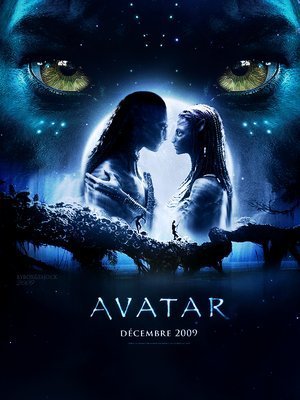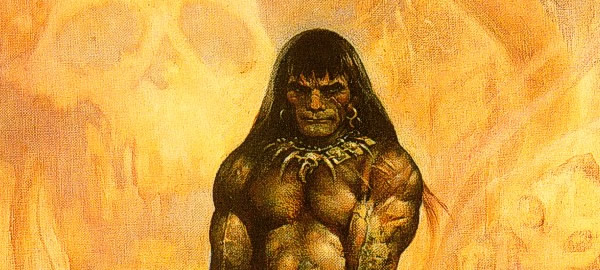(Originally published on Blogcritics.org)
The function of the critic is twofold: Identify what the author/artist/filmmaker is trying to say, then evaluate how well they say it. Many critiques have identified the anti-technology, anti-Western feel of Avatar, but to understand it, and why it influences so many people, you need to understand its philosophical roots.
 The theme of Avatar is that technology corrupts and that only by being in harmony with nature can true happiness be found. Sub-themes include “Corporations are Evil” and “The Military is Evil.” These themes seem strange coming from the most technologically advanced movie of all time, being produced, distributed, shown, and merchandised by mega-corporations whose freedom is protected by the military. How do we explain these apparent contradictions?
The theme of Avatar is that technology corrupts and that only by being in harmony with nature can true happiness be found. Sub-themes include “Corporations are Evil” and “The Military is Evil.” These themes seem strange coming from the most technologically advanced movie of all time, being produced, distributed, shown, and merchandised by mega-corporations whose freedom is protected by the military. How do we explain these apparent contradictions?
Is the message insincere? Not at all. It has been ingrained into certain intellectual elements of the culture for 300 years. The liberal/artist community really believes all this stuff. So where did it come from?
French philosopher Jean-Jacques Rousseau (1712-1778) popularized the concept of the “noble savage,” perhaps better translated as the “natural man.” Rousseau held that in a natural state man was compassionate and moral. He postulated that man reached his highest state when he came together in small related groups and learned love for the family, but before he became technologically sophisticated. This is the state of the inhabitants of Pandora, the Na’vi.
What happens when technology begins to intervene between man and the world? Corruption! Rousseau writes in his Discourse on Inequality:
The first man who, having fenced in a piece of land, said “This is mine,”…was the true founder of civil society. From how many crimes, wars, and murders, from how many horrors and misfortunes might not any one have saved mankind, by pulling up the stakes, or filling up the ditch, and crying to his fellows: Beware of listening to this impostor; you are undone if you once forget that the fruits of the earth belong to us all, and the earth itself to nobody.
Again, Avatar illustrates this philosophy be showing a society where nobody owns the land and where the true evil is produced by a corporation which wants to seize land and dig a ditch to exploit it for technology.
The worship of the natural man did not end with Rousseau. American cultural anthropologist Margaret Mead (1901-1978) in her most famous work, Coming of Age in Samoa, concludes that the problems experienced by adolescents in the West are problems created by civilization. She reports that adolescent problems were non-existent among the natural men and women of the South Seas. Her other works, such as Sex and Temperament in Three Primitive Societies, also fed into the mystique of the superiority of stone age cultures. In it, she describes societies in New Guinea where females dominated and pacifism was practiced; no nasty military needed.
Mead’s work made her an icon of the feminist movement and she was posthumously honored with the Medal of Freedom by liberal saint, President Jimmy Carter.
![]() Of more recent vintage than Rousseau or Mead, the Gaia hypothesis emerges. Created by British environmentalist James Lovelock, it proposes that the earth is one gigantic interconnected organism with feedback mechanisms. Lovelock took the name “Gaia” from the Greek goddess of the earth. In Avatar, the Na’vi worship a goddess named Eywa, through whom they can connect with organic USB connectors growing out of their heads, and exchange thoughts with the trees.
Of more recent vintage than Rousseau or Mead, the Gaia hypothesis emerges. Created by British environmentalist James Lovelock, it proposes that the earth is one gigantic interconnected organism with feedback mechanisms. Lovelock took the name “Gaia” from the Greek goddess of the earth. In Avatar, the Na’vi worship a goddess named Eywa, through whom they can connect with organic USB connectors growing out of their heads, and exchange thoughts with the trees.
Holy Gaia, Margaret Mead! Let’s all bow down and worship stone age people! The silliness of all this is made possible by the fact that it is easy to romanticize something at a distance. Rousseau never got near really primitive people, Mead could run back to civilization to have her cancer treated, and Lovelock defends his new age pseudo-science by dismissing the need to show cause and effect.
A more realistic take on stone age people is provided by Russian-American novelist and philosopher Ayn Rand. She suggested we go to a hut belonging to a primitive tribe and look at the hag in the corner with her rotting teeth, pendulous breasts, and wrinkled skin. The “old hag,” she points out, is 40 years old. For a movie which depicts stone age and iron age societies in conflict, while idealizing neither, try Black Robe.
Given that Avatar creates a world that is nothing more than a liberal, new age wet dream, it does it very well. Although the evil corporation and its army of mercenaries are identified as the “sky people,” they couldn’t be more American. They use American military terminology, dress in American uniforms, refer to the protectors of Pandora as tree-huggers, and are accused by one character of preparing “some kind of shock and awe thing” against the Na’vi. Let’s see, “shock and awe” — where did I hear that before?
A measure of the effectiveness of James Cameron’s work is that even though I watched the film in a conservative city, with banners honoring local service men and women flying from its light poles, when the surrogate-American soldiers where crushed and destroyed, applause and cheers came from the crowd. I found that chilling. Rousseau, Mead, and Lovelock would find it affirming.
Good job, James Cameron. And next time you need protection from a terrorist or a North Korean missile, call a tree.




